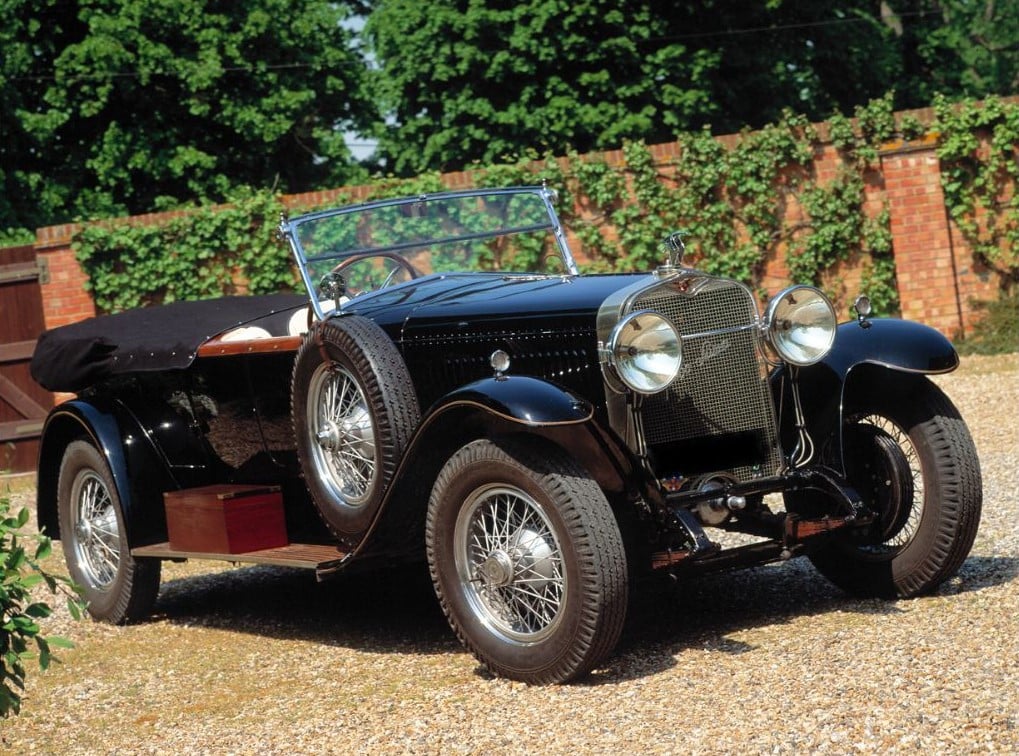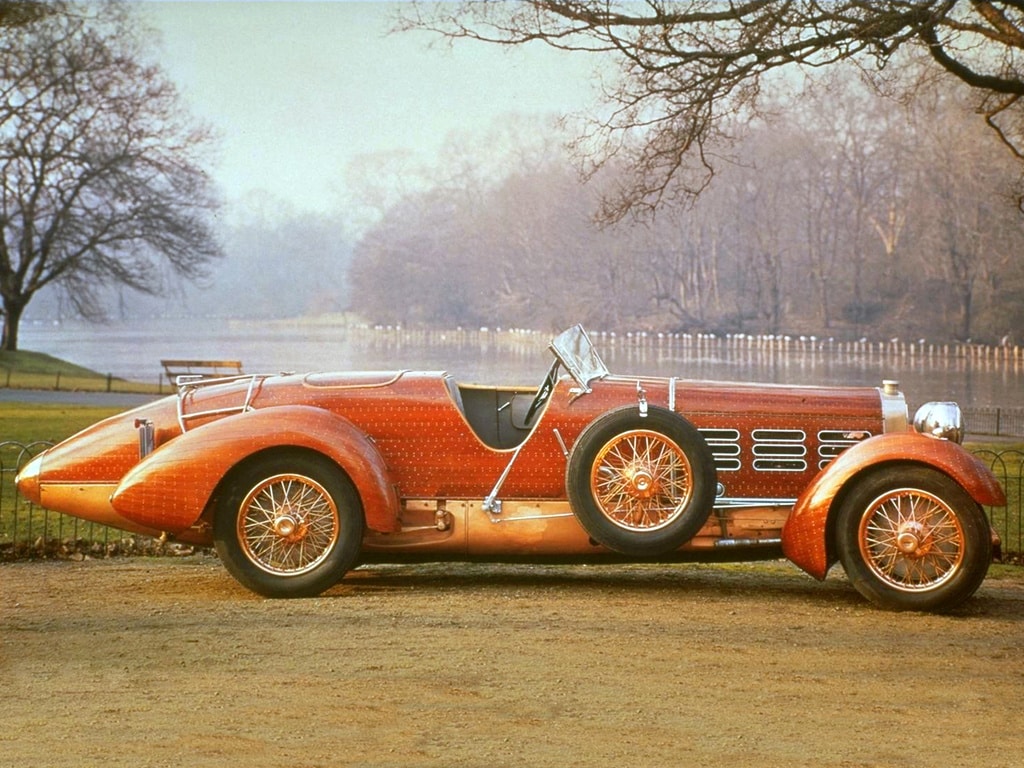The pre-war period in automotive history was a hotbed for talented engineers, new concepts, and bold ideas. The automobile was uncharted territory, and lots of companies and engineers wanted to make the “best car in the world.” Once very respectable but today has almost completely forgotten, Hispano-Suiza was one of those companies, and its remarkable model H6 might just be worthy of that title. Here is its story and why it was as good or even better than the Rolls Royce of the same vintage.
The Hispano-Suiza was a French aviation company that was started by Marc Birkigt (Swiss engineer) and Damian Mateu (French entrepreneur) in the early 1900s. The main facilities were located in Spain (hence the “Hispano” in the name). At first, this company was solely dedicated to aeronautical products and made very powerful airplane engines and equipment. However, after World War One ended in late 1918, Birkigt and Mateu realized that demand in military aviation will stop and decided to turn to make another festinating contraption – the automobile. With some experience in the field, the pair invested in a brand new chassis and massive six-cylinder engine to power the new model. The engine featured an overhead camshaft, but with 6.6-liter displacement, the same bore, and stroke, it was basically a half or the V12 machine used in airplanes. The manufacturing process was extraordinarily meticulous and borrowed from the aeronautical industry, which resulted in superb quality and dependability.

The new model was presented in Paris in 1919 and immediately drew enormous attention from the public. With its imposing lines, massive dimensions, and very powerful engine, the Hispano-Suiza H6 was a clear competitor to the world’s most prestigious brands, like Rolls Royce. The enormous 6.6-liter was rated at 135 hp, making it the most powerful car you could get at the time. Using a single Solex carburetor, this engine wasn’t rev-happy and topped at only 3000 rpm. Instead, it provided the driver with steady and ample amounts of torque which this big car with ease. The top speed was 85 mph, an astonishing figure for the late 1910s, indeed. Even though some claimed that the actual output was slightly less than advertised, the H6’s performance was the only proof customers needed.
However, the exquisite engine and chassis weren’t the only exciting parts of the car. The brakes received much attention since the H6 was the first car in the world to receive a power brake setup which consisted of four big aluminum drums and a power brake pump driven by the shaft from the transmission. Even though it sounds complicated, it was pretty reliable. So much so, that even its fiercest competitor Rolls Royce bought a patent from Hispano-Suiza.

As with many similar companies of the era, Hispano-Suiza didn’t offer complete cars to its customers. The company only produced rolling chassis with engines, gearboxes, and a complete drive train. Then the chassis was delivered to a coachbuilding company of choice (mostly French) to receive a body. Of course, Hispano-Suiza listened to any specific requirements, and customers asked for long or short-wheelbase models. It means that there are H6s in convertible or sedan form, as well as several race models and roadsters.

After the promising start, Hispano-Suiza decided to start improving engineering and, in 1922, introduced the H6B. The letter “B” stood for the second series with a slightly bigger engine and shorter chassis but no significant improvements in performance. Even though it was still a massive car, the company realized that it had considerable racing potential due to the fact it was very powerful, dependable, and could reach high speeds. Of course, the H6 didn’t have the agility of smaller cars, but it had sheer power and proved to be quite successful. In the hands of legendary Woolf Barnato (of Bentley fame), it set several top speed world records. Numerous racing drivers piloted Hispano-Suiza H6 to victory at prestigious events. Interestingly, Hispano-Suiza sold some of its technology to Skoda, which built cars under license in the Czech Republic.
In the mid-20s, Hispano-Suiza realized that H6 must be further improved to keep up with the competitors like Mercedes Benz, Isotta Fraschini, Packard, Duesenberg, and most of all, Rolls Royce. The best way to do so is to improve the engine, and the 8.0-liter version was introduced with power ranging from 145 to 150 hp. This model was called H6C, and it was to be the final integration of this legendary car. However, the story about Hispano-Suiza H6 was far from over. Apart from a steady flow of wealthy buyers, the company produced a couple of astonishing and one-off cars that cemented its place in automotive history.
The first one was the famous Hispano-Suiza H6C Targa Florio Roadster or Tulipwood Speedster as it was called. Commissioned by French racing ace Andre Dubonnet, the two-seater was envisioned as a racing machine for the 1924 Targa Florio race in Sicily. Dubonnet was an experienced racing driver who already enjoyed considerable success racing Hispano-Suizas; however, for this grueling race, he wanted something unique and much lighter than the standard car. The enormous 8.0-liter, straight-six engine was pushed to (acclaimed) 195 hp, and Dubonnet asked that the overall weight of the car body should be under 50 kg. Since this was impossible to achieve with any type of metal, he turned to an aircraft manufacturer that provided him with a body made of strips of tulipwood and mahogany stripes held together by thousands of tiny rivets. Even though he didn’t win, the car performed beautifully.

The second signature, H6, was also commissioned by Dubonnet and was produced in 1938. Called the Hispano-Suiza H6B Dubonnet Xenia (named after his second wife), this futuristic and streamlined model featured numerous firsts in the car industry. Apart from a self-leveling body, Dubonnet Xenia had suicide doors, a unique interior, and an aerodynamic cabin. Even though this model was produced in the late ‘30s, the official end of H6 production came in 1933, after less than 2.400 cars were produced in all versions.






